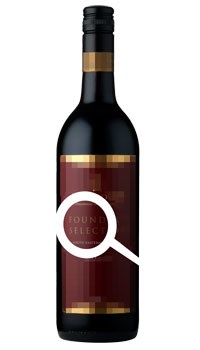How To Read A Wine Label

There has never been so much wine for us to choose from, wines from every corner of the ‘wine world’ that we are spoilt for choice. So how do we know which wines represent the best examples so we can judge before we buy to always get the best value for money!
The process of buying wine can be made much more interesting and reliable, it just requires the right understanding of what to look for and then to judge if the price fits not only our budget, but also the ‘experience expected’. Then we must learn how to taste and recognize the flavours of the different grape varieties. We will cover this in a subsequent feature!
There is nothing worse as I am sure we have all found out when the excitement of returning home with well earned wine for your pleasure and relaxation, falls short in expectation of taste and quality.
The First Step:
So first we must learn to how read the label, the ‘window to every bottle’. This will help you to choose the best examples from the country of origin, the grape varieties for identification of taste and the best value for money to suit your pocket. If you keep going for the ‘3 bottles for a tenner’ then the chances are you will only benefit from the alcohol content and not the real flavours that better produced wines have to offer. However There are still many good and inexpensive wines out there to be found.
The Wine Label:
There must be by EU law certain information displayed on the label, this must be on the front of the bottle, some wines will have a back label also describing the style of wine and the flavours to expect from the grape varieties used to make the wine and perhaps certain suggested foods that may best accompany it.
Information by law:
- The quality classification
- The country of origin
- Alcohol content - ABV [alcohol by volume]
- The liquid content - 75cl / litre / 1.5litre etc.
- Year of vintage - if any
- The name and address of producer
Many producers now feel that this amount of information restricts them from advertising with their ‘eye catching logos’ and ‘picture perfect labels’ to grab your attention, so they create a ‘back label’ design with a basic ‘front label’ for the legal requirements, then many times the bottle is turned round on the shelf for display presentation purposes, so take the time to read everything, you will learn more and its fun. There is no need to be confused as the ‘information label’ is there to help you.
Each country has its own quality control system and details will be printed on the label, so we will feature all of these, country by country, in future presentations, keep a look out for them so you can build your knowledge! We will start here as an example with what to look out for on a typical bottle of French Wine and what the terms mean:
Language of the Label:
Common French Wine Terms
Appellation [d’Origine] Contrôlée ‘AOC’ or AC - These are the foremost quality control regulations of production methods that govern allowable grape varieties, vineyard location and much more. They are general laws throughout the country that have been adapted to each region. They are strict, but designed to keep tradition and authenticity firmly in place.
VDQS [Vin Délimité de Qualité Supérieure] - Next level down from AOC, but does not always mean the wines under this category are of lower quality. It is all about production expertise.
Vin de Pays - Country Wine from larger delimited areas that are allowed to produce in larger volume.
Vin de Table - Table Wine with no definite geographical location or grape variety.
Blanc - White
Rouge -Red
Rosé - Pink
Chateau - Wine Estate - These can vary from the very majestic Chateaux of Bordeaux, Burgundy and the Loire, to smaller farm houses such as in the Languedoc region
Cave - Co-operative
Domanine: Vineyard holding, for example, the smaller estates of Burgundy.
Coteaux de or Côtes de: Coast, slopes or hillsides.
Grand Cru - Literally means ‘Great Growth’ - Describes wine of a higher quality, particularly in Burgundy.
Grands Crus Classés - Important classification of wine such as the 1865 classification of Bordeaux
Recoltant or Vigneron: Wine Grower
Recolte: Vintage
Negotiant: Merchant or buyer.
Vielles Vignes: Wines produced from ‘old vines’
Villages: Communes or Parishes
Written By: Alan Hunter AIWS